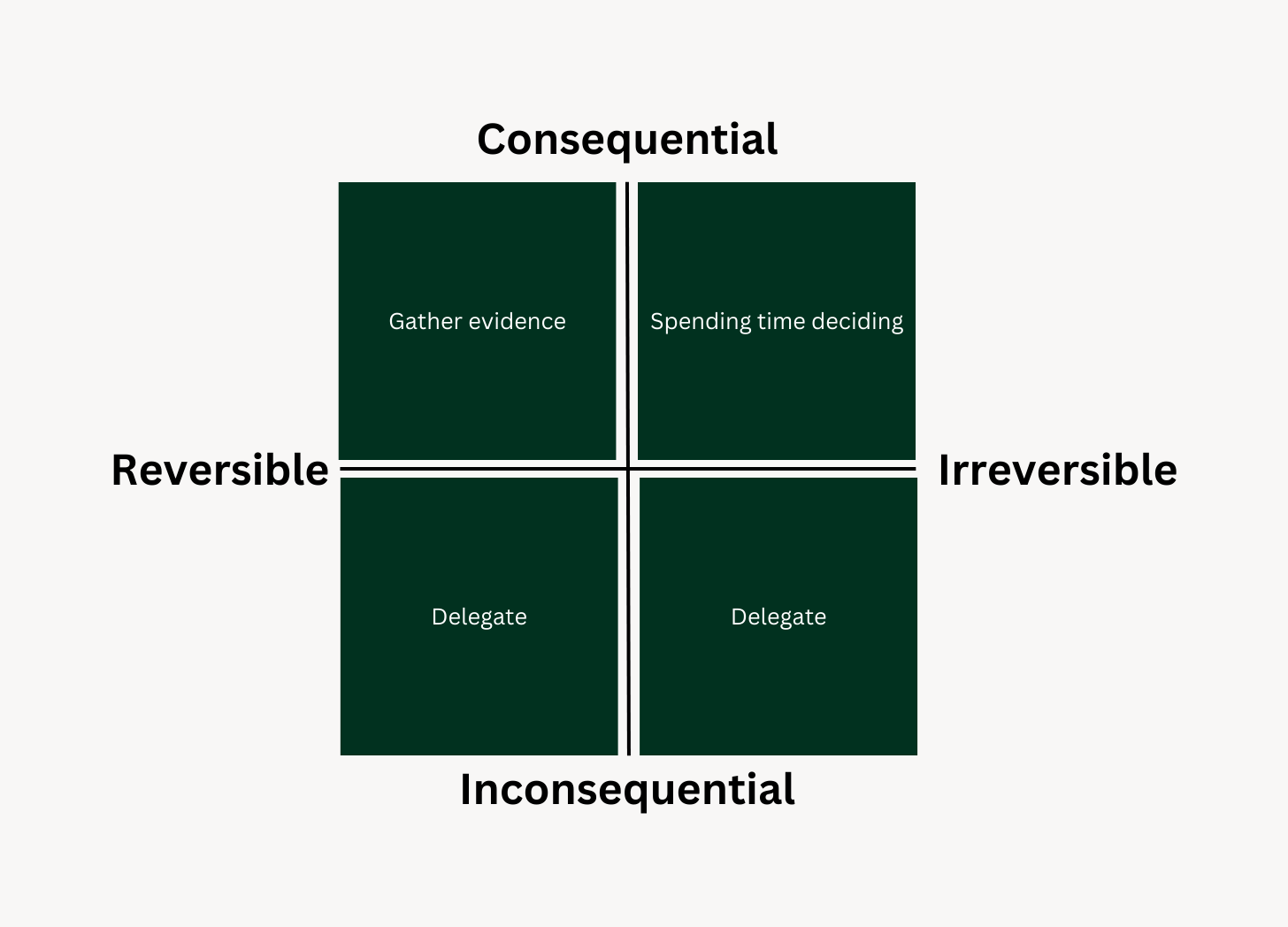Making decisions is part of everyday life. However, not all decisions are created equal as some are easily reversible and should be made quickly with a bias towards action, while others have a long-lasting effect or are irreversible; those require careful and deliberate planning before being made.
One-way and two-way door thinking provides a practical mental model for decision-making in product building. This way of thinking was popularised by Amazon to show the reversibility and implications of the choices we make by Jeff Bezos’ 1997 letter to shareholders in which he explained how he approaches decisions and why it’s important to distinguish these two types.
Knowing which type of decision you're making can save you a lot of stress and resources and ultimately help avoid analysis paralysis.
Type 1: One-Way Door Decisions
Once you make a Type 1 decision, there's no going back.
Examples
Selling or acquiring a company
Signing a new vendor on a long-term contract leads to vendor lock-in
Changing your product tech stack (productivity and opportunity cost of changing stacks rather than shipping new features)
Type 2: Two-Way Door Decisions
While important, this decision can be classified as reversible since later switching to a different tool is generally feasible with minimal disruption.
Examples
Choosing which collaboration tool (e.g. Slack, Microsoft Teams) to use
Offering a new service or feature
Introducing new pricing schemes
How to Know if the Decision is Type 1 or 2
Impact and Reach: Decisions affecting critical operations or requiring substantial investment need thorough research, unlike those with limited impact.
Cost of Change: High-cost decisions (financial, time, resources) are "One-way door" decisions needing careful planning. Low-cost decisions allow for flexibility and experimentation.
Time Sensitivity: Quick decisions for market opportunities or competitive response might require a "fail fast" approach for "Two-way door" decisions, but "One-way door" decisions need deliberate planning.
Consultation and Expertise: Expert engagement is crucial for informed "One-way door" decisions, while for "Two-way door" decisions, extensive consultation may not be justified due to cost and time considerations.
Conclusion
Every time you need to make a product decision, make a more important decision first: Decide whether it is a Type 1 or a Type 2 decision.
If it's a Type 2, easily reversible decision, make and execute it quickly.
Make reversible decisions as soon as possible and make irreversible decisions as late as possible.
And that’s everything for this week.
If you’re finding this newsletter valuable, subscribe if you haven’t already:






